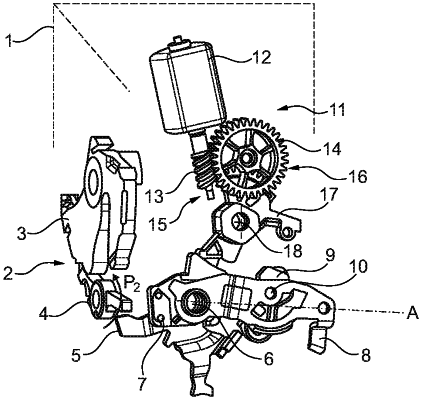| CPC E05B 81/16 (2013.01) [E05B 77/06 (2013.01); E05B 81/06 (2013.01); E05B 81/34 (2013.01); E05B 81/42 (2013.01); E05B 81/90 (2013.01)] | 13 Claims |

|
1. An electrically actuatable motor vehicle lock, comprising:
a locking mechanism having a rotary latch and at least one pawl, a release lever, wherein the release lever interacts with the locking mechanism in such a way that a blocked locking mechanism can be unblocked,
an electric drive unit and a manually actuatable actuating lever, wherein the release lever is actuatable by either one of the electric drive unit and the manually actuatable actuating lever,
a locking unit, wherein manual unblocking of the locking mechanism is prevented by the locking unit, wherein the drive unit is configured to permit simultaneous locking of the manual actuatable actuating lever and unblocking of the locking mechanism, and
a control lever,
wherein the drive unit includes a control member,
wherein the control member engages with the release lever in such a way that the control member blocks a movement of the control lever during actuation of the release lever, and
a coupling lever that is arranged between the actuating lever and the release lever,
wherein the coupling lever is configured such that when the actuating lever is actuated with a conventional actuation speed the coupling lever engages with the release lever and unblocks the locking mechanism, and when the control lever is blocked by the control member, then, when the actuating lever is moved, the coupling lever is deflected and the release lever is not actuated.
|